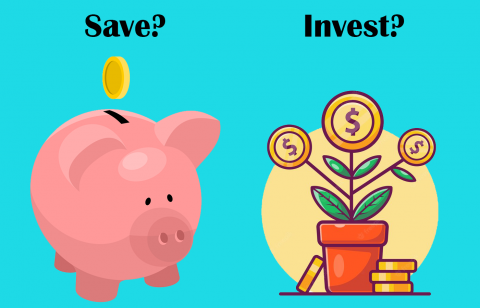Submitted by nsscadmin on

Are you saving or investing for your financial future? Did you know there was a difference between saving and investing? One may be the better option depending on what you have planned for the money you are investing or saving.
So, what is the difference between saving and investing? Saving is typically setting aside money that you haven’t spent for emergencies or a future purchase. This money could be placed in a savings account, kept in an envelope in your house, or buried in your backyard. Please do not bury money in your yard. It wasn’t a good idea for pirates and it’s still not a good idea.
This saved money is easy to access and there is little to no risk of it being lost unless it is somehow stolen. It can be readily available as an emergency fund for an unexpected car or home repair, or an expected future purchase like a vacation.
If you’re investing, you’re making your money work for you by purchasing some kind of asset such as stocks, bonds, mutual funds, exchange-traded funds, or another investment products with the expectation that these investments will make money for you over time. There is risk involved here as there is no guarantee that an investment will make you money, and no guarantee on how long it might take to make money. Due to this risk and time variance, investing is usually a long-term venture and uses money you won’t need immediate access to. Money you invest is often used for a longer-term financial goal such as a buying a house, funding post-secondary education, or funding retirement.
Another way of seeing the long-term difference between saving and investing is by looking at an example using the same amount of money. Let’s look at what saving and investing $1000 might look like after 10 years.
First let’s look at saving. Let’s say we’re saving $1,000 by depositing it in a saving account that gets 0.25 precent interest per year, compounded over 10 years. At the end of 10 years your initial $1,000 will now be worth $1,025.28. You’ve earned $25.28 in interest.
Now let’s look at investing. Let’s say we invest our $1,000 and we expect an average rate of return of 3 percent per year. If we were to get a 3 percent return each year, after 10 years we would have $1,343.92. Remember though, this 3 percent isn’t guaranteed. Some years we may make more, some years less. Some years we may lose money on our investment. This example simply shows the difference investing can provide you when compared to simple saving over time.
